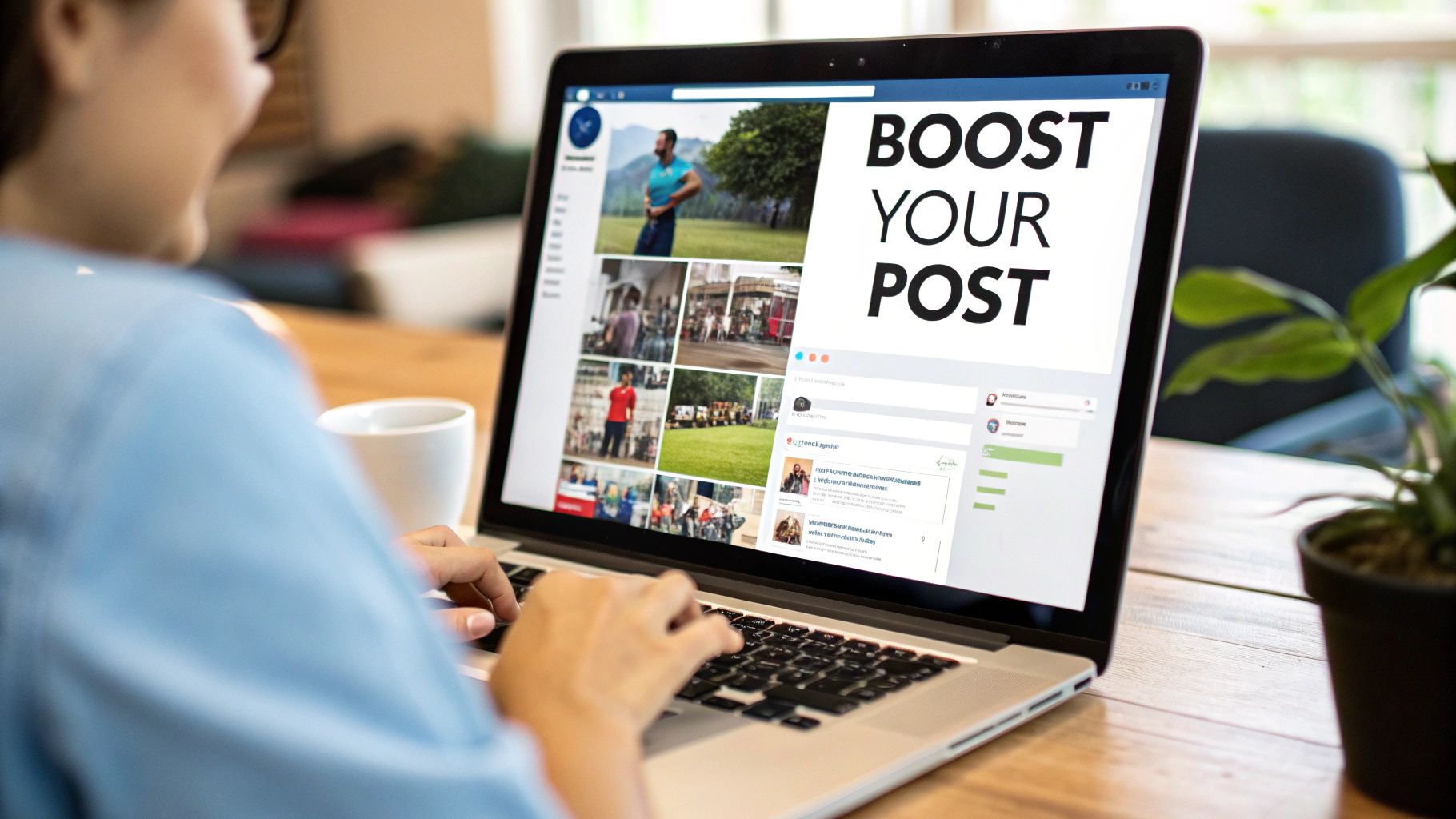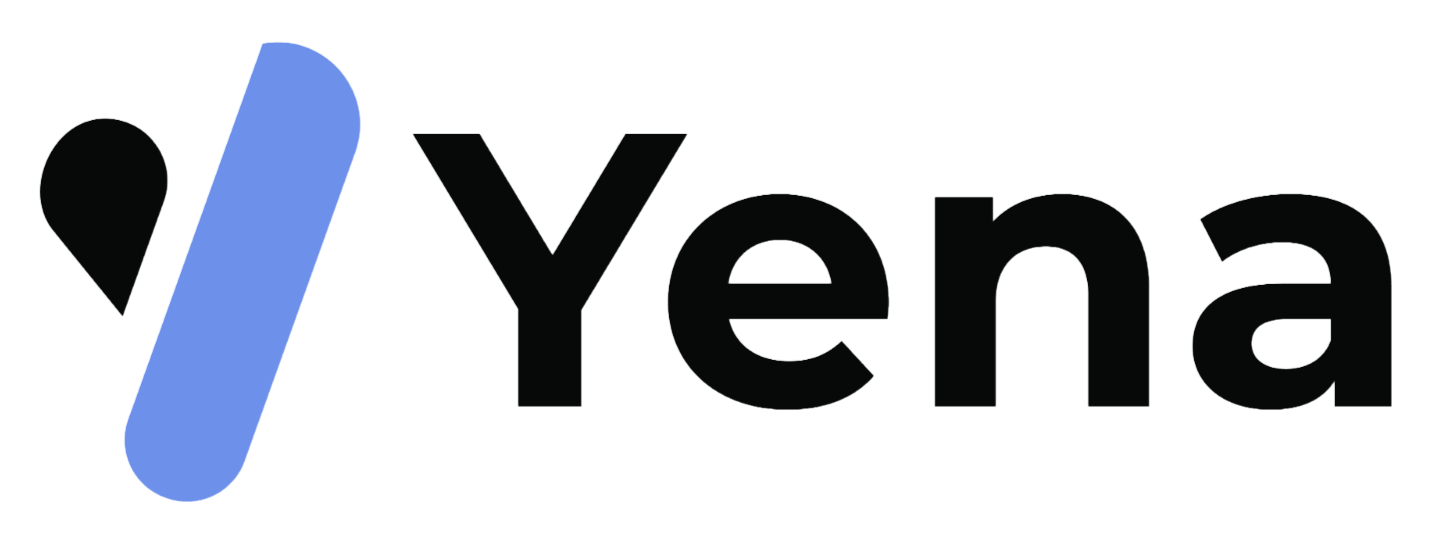How to Post a Job on LinkedIn: Real Strategies That Work
- Janis Kolomenskis
- Jun 12
- 11 min read
Setting Up Your LinkedIn Foundation For Hiring Success
So, here's the deal: a lot of recruiters treat LinkedIn like just another job board. They throw up generic job postings and cross their fingers. But LinkedIn isn't just a place to post jobs; it's a powerful networking platform, and building a solid presence before you start hiring is essential. I've seen it myself – a little prep work can make a world of difference.
Your company page isn't just some online brochure; it's often the first impression a potential candidate has of your organization. It’s where they go to research your company and decide if they'd even consider working for you.
So, how do you make your LinkedIn presence a magnet for top talent? Well, first, make sure your company page is complete and interesting. Think of it as your digital storefront. Show off your company culture, highlight employee testimonials, and share industry-related content regularly. This isn’t about vanity metrics; it’s about building trust and attracting candidates who are a good fit for your values. A strong company page shows you care about your brand, which tells potential hires that you’ll care about them, too.
Your personal LinkedIn profile is also important, especially if you're the one doing the hiring. Candidates frequently research the hiring manager before they apply. Make sure your profile accurately represents your experience and what you bring to the table. A solid profile builds credibility and positions you as someone candidates will want to work with. This can have a huge impact on the quality of applications you receive. Think about it – would you rather apply to a job posted by a faceless corporation or by a real person with an interesting background?
Building this foundation is key to attracting the right people. And here’s the kicker: this groundwork significantly influences how LinkedIn’s algorithm ranks your job posts. A strong company page and an active recruiter profile signal to LinkedIn that your content is valuable, which boosts its visibility. This translates to more eyeballs on your job postings, reaching the right people at the right time.
Speaking of reaching the right people, LinkedIn is a hiring powerhouse. Get this: about 7 people are hired every minute through the platform. Over three million people are hired annually, and 72% of recruiters rely on LinkedIn to find talent. Discover more insights. So, before you even think about posting a job, make sure your LinkedIn presence is top-notch. It’s an investment that will definitely pay dividends.
Writing Job Descriptions That Actually Attract Top Talent
Let's be real, most job descriptions are snooze-fests. Packed with corporate jargon and generic requirements, they sound like they were written by a robot. I've seen countless job postings, and the ones that truly shine—the ones that snag top talent—speak directly to what motivates people. They feel like a genuine conversation, not a list of demands.
One of the biggest pitfalls I see is the rigid, template approach. This leads to bland, uninspiring descriptions that fail to capture the unique aspects of your role and company culture. Instead, think about what makes your opportunity special. What kind of person would thrive in this environment? Write your description for them.
For example, if you're hiring for a fast-paced startup, highlight the chance for growth and making a real impact. If it's a more established company, emphasize stability and career development opportunities.

The infographic above shows open positions across different departments and the average time it takes to fill them. Notice how the Tech department, while having the most openings, also has the longest time-to-fill. This hints at a competitive market or specialized skill requirements, reinforcing the need for a truly compelling job description, especially for those harder-to-fill roles. Want more details on crafting killer job descriptions? Check out our guide on writing a job description that actually attracts top talent.
Focusing on the candidate's perspective also means using language that resonates. Instead of just listing responsibilities, paint a picture of their day-to-day. Show them how their work contributes to the bigger picture. This not only attracts the right people, but it also helps filter out those who aren't a good fit. Remember, a good job description isn't about attracting any candidate; it's about attracting the right one. Using specific language can significantly boost response rates—some studies show improvements of up to 40%.
Your job description is a key piece of your employer brand. It's your chance to showcase your company culture and values, highlighting what it's actually like to work there. This is huge for attracting top performers, who are often driven by more than just a paycheck. They’re looking for a place where they feel valued, challenged, and part of something meaningful. A strong culture description can be the deciding factor for a candidate choosing your company over another. Don't let this opportunity slip away!
To really make a difference in your application rates, consider these key elements:
High-Converting Job Description Elements
The table below compares standard job posting elements with an optimized approach, showing the potential impact on application rates. It's a quick way to see how small changes can make a big difference.
Element | Standard Approach | Optimized Approach | Impact on Applications |
|---|---|---|---|
Job Title | Generic (e.g., "Marketing Manager") | Specific and Keyword-Rich (e.g., "Senior Content Marketing Manager - SaaS") | Increased visibility and relevance |
Company Description | Boilerplate text | Engaging overview of culture and values | Higher candidate engagement |
Responsibilities | Dry list of duties | Action-oriented descriptions of daily tasks and impact | Better understanding of the role |
Requirements | Long list of qualifications | Focused on essential skills and experience | More qualified applicants |
Call to Action | Generic ("Apply Now") | Clear and enticing next steps (e.g., "Join our team and make a difference!") | Higher click-through rates |
As you can see, optimizing each element helps attract more, and more relevant, candidates. It's about making sure your job description works for you, not against you.
Mastering LinkedIn's Job Posting Interface Like a Pro
The LinkedIn job posting interface… it can feel like a beast, right? It’s definitely more than just a place to throw up a job description. Honestly, knowing how to use it well is the difference between crickets and a flood of great applicants. I’ve chatted with recruiters who practically live on LinkedIn, posting tons of jobs, and the consensus is clear: every little detail matters.

Take a look at this screenshot of the LinkedIn Talent Solutions homepage. See how much emphasis is placed on finding the right talent, building your employer brand, and managing the whole hiring process? LinkedIn’s trying to be a real partner in talent acquisition, not just a basic job board.
One thing that trips people up is choosing the right job categories. Think of it like this: these categories are how LinkedIn decides who sees your post. Pick something too general, and your amazing job description gets buried. Get specific, and you’re putting it right in front of the perfect candidates. Same goes for location – especially if you're hiring in Latvia. You want a wide net, but you also don’t want to waste time with applicants who would never relocate.
Now, beyond the basics, there are a bunch of other features that can make or break your job posting. Screening questions, for example. Super helpful if done right. Ask too many, though, and you’ll scare people off. Ask the wrong ones, and you’ll be sifting through a mountain of irrelevant responses. Salary ranges are another tricky one. Transparency is key, but set the range too low and you won’t attract top talent. Too high? You might get people who are overqualified and looking to jump ship quickly.
Finally, let’s talk about LinkedIn's premium features. They’re shiny and tempting, but are they always worth it? Knowing when to splurge on these extras can seriously impact your budget and your overall return on investment. Mastering the LinkedIn interface—knowing which buttons to click, which options to choose, and which features to use—can turn your job posting from a random act into a targeted strategy. It's about getting the most bang for your buck and finding the best people for your team.
Getting Your Job Post Seen By The Right People
Publishing your job post on LinkedIn is just the beginning. It's like setting sail – you’ve built a great ship, but now you need to chart a course to the right waters. Getting your post seen by top-notch candidates means understanding how LinkedIn's algorithm works. This isn't about simply clicking “publish”; it's about strategic visibility.
LinkedIn considers many factors when deciding which jobs to show and to whom. Understanding these factors gives you a real advantage. For example, while you often hear Tuesday mornings are the prime time to post, that's not a universal truth. Consider your specific audience. Are they even active on LinkedIn first thing Tuesday? Think about their typical work week and when they're most likely to be searching for new opportunities.

Tapping into your company’s internal network is like adding rocket fuel to your job post. Encourage your employees to share the post and interact with it. This organic boost can dramatically expand your reach. Don't underestimate engaging with early applicants, either. Responding quickly and thoughtfully shows respect to those candidates and signals to LinkedIn that your post is active and relevant, further increasing visibility. And speaking of visibility, it's important to know which metrics actually matter. You might find this helpful: Essential Recruiting Metrics To Improve Hiring In 2025.
Keeping your post active throughout its lifespan is essential. This isn't a "post and ghost" situation. Regularly refreshing your post, responding to comments, and even tweaking the job description based on initial feedback can keep it at the top of search results. Experiment with relevant hashtags, too. They can help your post get discovered by those searching for specific keywords. Plus, remember the sheer volume of activity on LinkedIn. As of 2025, over 9,000 job applications are submitted every minute, adding up to more than 12.9 million daily. This shows the huge potential for recruiters to quickly connect with qualified candidates. Discover more insights.
Building relationships within relevant LinkedIn talent communities can also yield great results. Engage in discussions, share valuable content, and become a known resource. This builds trust and establishes your presence within your target audience’s network.
Finally, while organic reach is invaluable, sometimes sponsored job posts can be a smart move, especially for highly competitive roles or when you need to fill a position quickly. Knowing when to use these features, and how to track their impact, is key to maximizing your budget and seeing a solid return on your investment.
Managing Applications Without Losing Your Best Candidates

So, your LinkedIn job post is live, and the applications are pouring in. Now the real fun begins! Seriously, how do you sort through potentially hundreds of applicants without letting the rockstars slip through the cracks? It's all about having a solid system. Trust me, the best recruiters I know aren't just magically pulling top talent out of a hat—they have a well-defined process. For some extra tips, check out our post on top recruiting best practices.
First things first: LinkedIn's built-in tools. Don't let them overwhelm you—make them work for you. Organize your applicant pool, use tags to categorize candidates (like "strong communicator" or "needs follow-up"), and get comfortable with the messaging system. Think of it as creating filters to help you quickly zero in on the most promising candidates.
Streamlining Your Communication
Creating response frameworks can be a lifesaver, especially when volume is high. This isn't about sending robotic messages, though! Build templates you can quickly personalize. Mention something specific from their profile—a project they worked on, a skill they highlighted—to show you've actually taken the time to look at their application. That little bit of personal touch goes a long way.
Keeping your hiring managers in the loop is also key. Establish clear communication channels and workflows from the get-go. Regular updates, shared feedback, collaborative decision-making – whatever works for your team, just make sure everyone is on the same page. A streamlined workflow keeps things moving and prevents top candidates from getting snatched up by the competition while you're stuck in internal delays.
Engaging With Candidates on LinkedIn
Mastering the art of screening candidates within LinkedIn's messaging system is a game-changer. Asking targeted questions can quickly surface important info and help you assess if someone's a good fit. For example, instead of a generic "tell me about yourself," try something like, "I noticed you led the X project at Y company. Can you tell me more about your role in that?" It’s all about maximizing each interaction.
Candidate engagement, especially during those longer hiring processes, is essential. Regular updates, even a quick "we're still reviewing applications and will be in touch soon," make a big difference. It shows candidates you value their time and keeps them interested.
Let’s talk about handling rejections. This is a chance to turn a "no" into a positive experience for the candidate and your company. A thoughtful, respectful rejection can leave a lasting impression. They might be a perfect fit for a future role or even recommend your company to others.
To help illustrate best practices for candidate communication, take a look at this table:
Candidate Response Timeline Best Practices Recommended response times and communication frequency for different stages of the hiring process
Hiring Stage | Response Time | Communication Type | Candidate Expectation |
|---|---|---|---|
Application Received | Within 24-48 hours | Automated acknowledgment | Confirmation of receipt |
Initial Screening | Within 3-5 business days | Email or LinkedIn message | Invitation to interview or further screening |
Interview Stage | Within 24 hours after each interview | Email or phone call | Feedback and next steps |
Offer Stage | Within 24-48 hours of offer acceptance | Formal offer letter | Clear terms and conditions |
Rejection | Within 24-48 hours of decision | Email or LinkedIn message | Explanation and appreciation for their time |
This table highlights the importance of timely and appropriate communication throughout the hiring process. By following these guidelines, you can ensure a positive candidate experience, even for those who are not ultimately hired. Remember, every interaction is an opportunity to build your employer brand.
Solving Common LinkedIn Job Posting Problems
Let's be honest, even the most experienced recruiters hit snags with LinkedIn job postings. Sometimes, things just don't go as planned. Maybe your post views suddenly tank, or you're flooded with applications from people who are completely off the mark. It's a headache, I know. Let's break down some of these common problems and how to fix them.
Ever spend hours perfecting a job description, only to hear crickets? It happens. Before you tear it apart and start over, take a breath and do a little detective work. Are you reaching the right people? Are your keywords spot-on for someone searching "post a job on linkedin"? Think about your requirements–are they too narrow, or maybe not specific enough? Sometimes a little tweak, like adding location-based keywords (e.g., "Latvia"), can make all the difference.
Another common issue is attracting the wrong candidates. You need a seasoned Senior Marketing Manager with SaaS experience, but you're getting entry-level applicants with no relevant background. This usually signals a problem with your targeting. Go back and review your chosen job categories, location settings, and even your screening questions. While a complete revamp is sometimes needed, you can often adjust your approach mid-campaign and still connect with the right candidates.
Then there are the technical glitches. Ever have a post just disappear from search results? Poof, gone! This happens more than you think. Double-check your post settings, make sure everything is published correctly, and—believe it or not—sometimes simply resubmitting the post works. And let’s not forget about the budget drain of sponsored content that just isn’t converting. This is where tracking your metrics is key. Are people clicking but not applying? Your landing page might need some love. Not even getting clicks? Time to revisit your targeting and ad copy.
Finally, miscommunication with hiring managers can throw a wrench into even the best-planned campaigns. Requirements shift, budgets change, timelines get squeezed. It comes with the territory. The best defense? Proactive communication. Regular check-ins, clearly defined expectations, and open conversations can prevent major frustrations down the line.
By learning how to troubleshoot these common LinkedIn posting problems, you’re not just reacting; you’re building a toolkit of knowledge that will make your next posting even more successful.
Ready to take your hiring to the next level and create a candidate experience that truly shines? Check out Yena, the AI-powered ATS built to streamline your workflow and help you find the perfect candidates, faster.

Comments